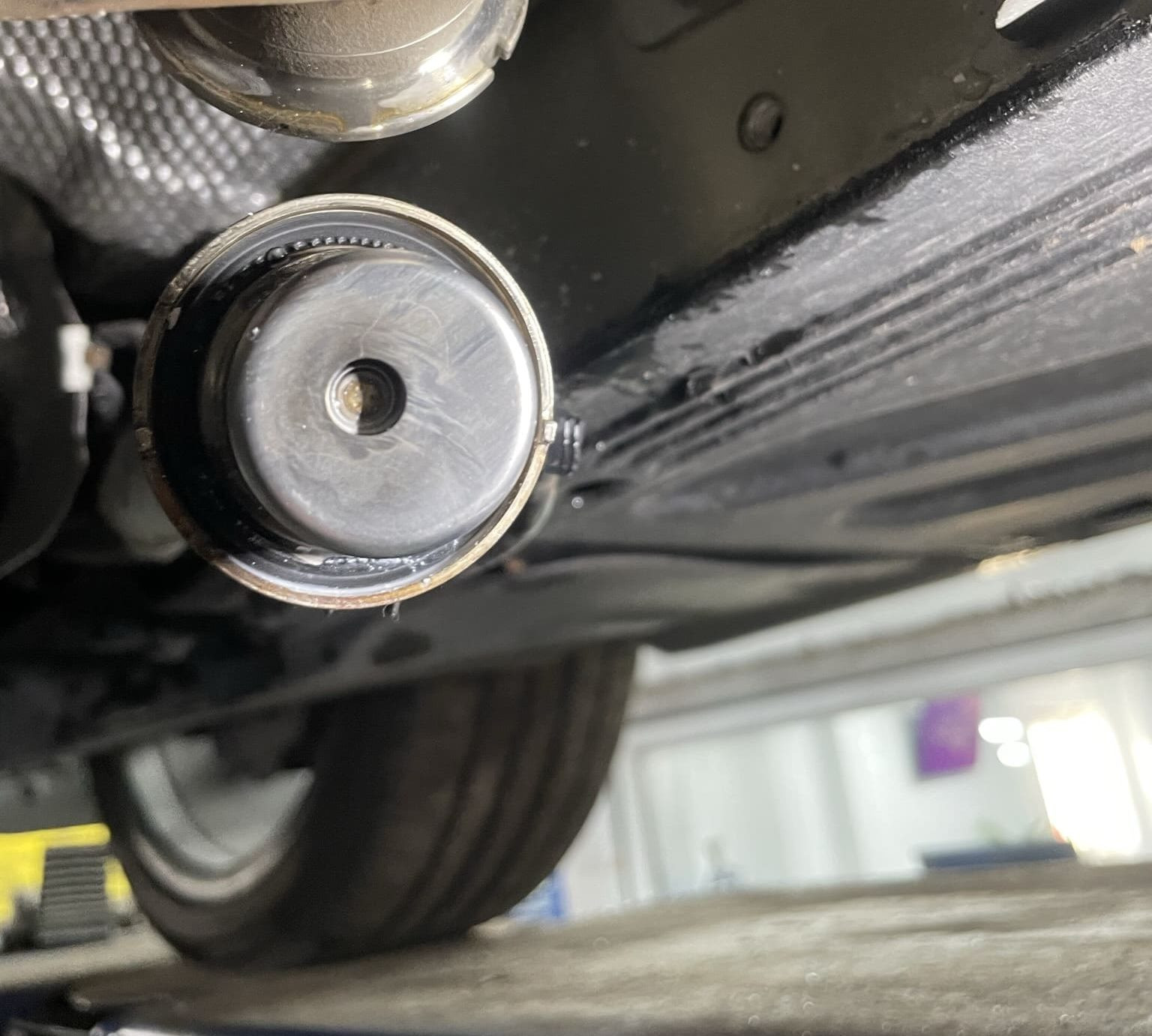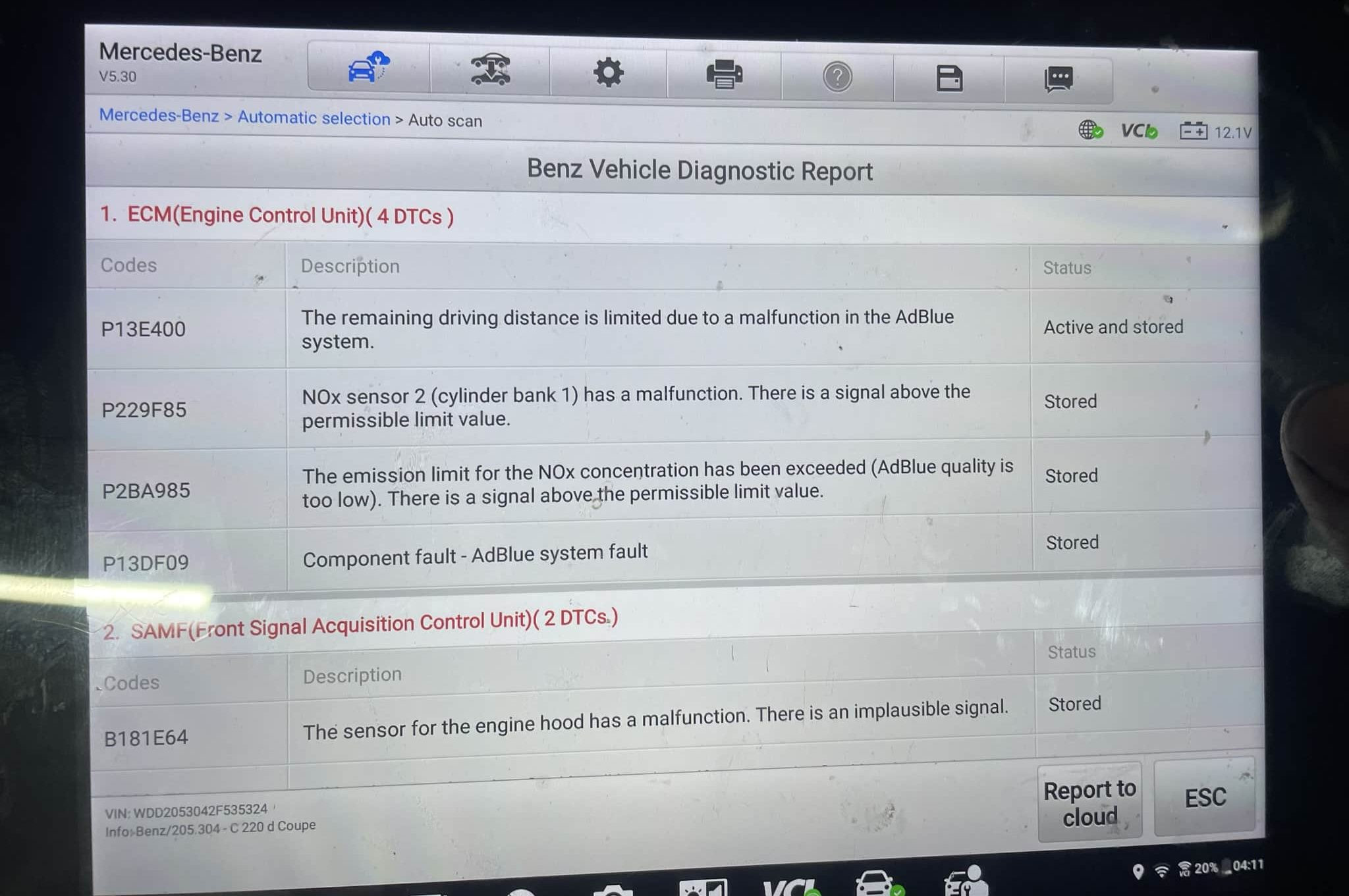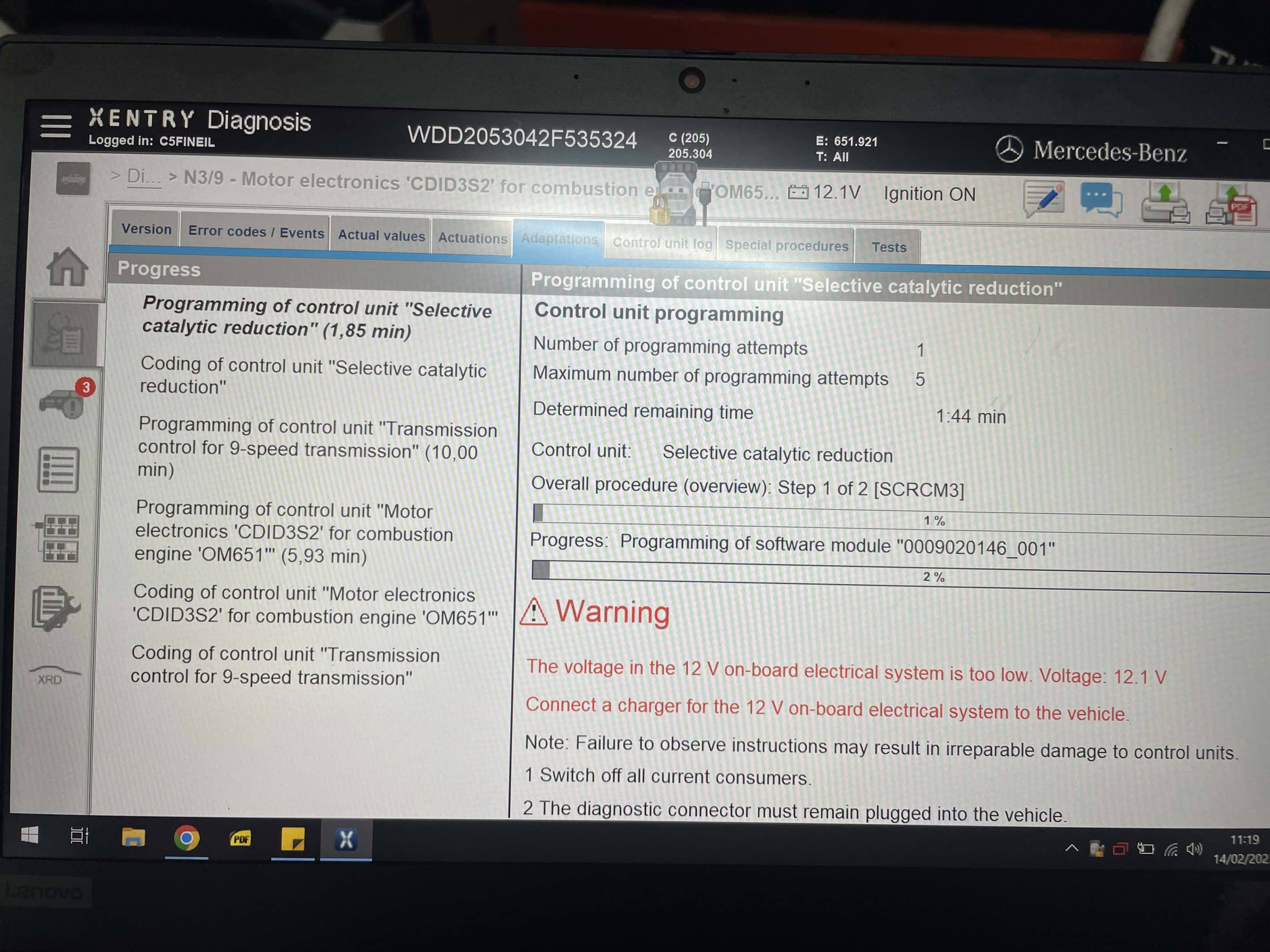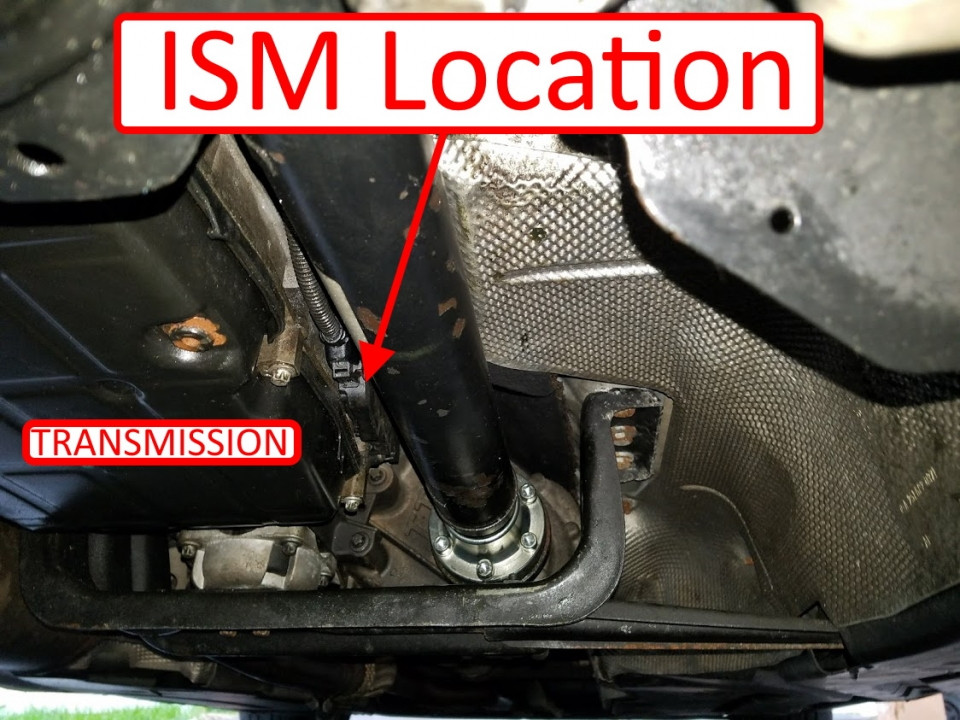P13DF09 Mercedes Fault Code: Expert Diagnosis & Solutions

At CARDIAGTECH.NET, we understand the frustration of encountering a P13DF09 Mercedes fault code, indicating an AdBlue system malfunction; let our expert technicians guide you through comprehensive diagnostics and efficient repair solutions and provide you with the tools to fix it yourself. We offer advanced diagnostic tools and equipment to help you resolve this issue effectively. Enhance your repair capabilities with our cutting-edge tools.
Table of Contents
- What Does the P13DF09 Mercedes Fault Code Mean?
- What are the Common Symptoms of a P13DF09 Fault Code?
- What Causes the P13DF09 Mercedes Fault Code?
- How to Diagnose the P13DF09 Fault Code: A Step-by-Step Guide
- Step-by-Step Guide to Clearing the P13DF09 Code
- Tools Needed to Fix the P13DF09 Code
- Can I Drive My Mercedes with the P13DF09 Fault Code?
- What are the Common Mistakes When Dealing with the P13DF09 Code?
- How Much Does It Cost to Fix the P13DF09 Mercedes Fault Code?
- How Can CARDIAGTECH.NET Help Me Resolve the P13DF09 Code?
- How to Prevent the P13DF09 Fault Code in the Future
- FAQ Section
- Ready to Fix Your Mercedes? Contact CARDIAGTECH.NET Today!
1. What Does the P13DF09 Mercedes Fault Code Mean?
The P13DF09 Mercedes fault code signifies a malfunction within the AdBlue system, which is critical for reducing harmful emissions; this component fault indicates that the AdBlue system isn’t functioning as expected, potentially leading to increased emissions and performance issues. This fault can stem from various issues, including a faulty AdBlue injector, pump failures, or sensor malfunctions.
-
AdBlue System: The Selective Catalytic Reduction (SCR) system, commonly known as the AdBlue system, reduces nitrogen oxide (NOx) emissions from diesel engines by injecting a urea-based solution (AdBlue) into the exhaust stream.
-
Component Fault: This means a specific part within the AdBlue system is not working correctly. It could be an electrical component, a mechanical part, or a sensor that has failed or is providing incorrect readings.
According to a study by the European Automobile Manufacturers Association (ACEA), effective AdBlue systems can reduce NOx emissions by up to 90%. The P13DF09 fault code indicates a disruption in this critical emission control process.
2. What are the Common Symptoms of a P13DF09 Fault Code?
Recognizing the symptoms associated with the P13DF09 fault code is crucial for prompt diagnosis and repair and these symptoms can range from warning lights on your dashboard to noticeable decreases in engine performance.
-
Dashboard Warning Lights: The most immediate sign is the illumination of the check engine light or specific AdBlue warning lights on the dashboard.
-
Reduced Engine Power: The engine control unit (ECU) may limit engine power to prevent further damage or increased emissions, resulting in sluggish acceleration and overall poor performance.
-
AdBlue Level Warnings: You might notice frequent or persistent warnings about low AdBlue levels, even after refilling the tank.
-
Emissions Issues: Failed emissions tests due to high NOx levels are common when the AdBlue system isn’t functioning correctly.
-
Engine Starting Problems: In some cases, the vehicle may refuse to start if the AdBlue system fault is severe enough.
A survey by the German Federal Motor Transport Authority (KBA) found that AdBlue system malfunctions are a significant cause of diesel vehicle emissions exceeding regulatory limits. Addressing these symptoms promptly can prevent further complications.
3. What Causes the P13DF09 Mercedes Fault Code?
Several factors can trigger the P13DF09 fault code in your Mercedes, understanding these causes can help you target the diagnostic process more effectively.
-
Faulty AdBlue Injector: The injector could be clogged, leaking, or malfunctioning, preventing proper AdBlue delivery.
-
AdBlue Pump Failure: The pump may fail to provide adequate pressure to the AdBlue injector, disrupting the SCR process.
-
NOx Sensor Issues: Malfunctioning NOx sensors can provide incorrect data to the ECU, leading to fault codes and incorrect AdBlue dosing.
-
Clogged or Leaking AdBlue Lines: Blockages or leaks in the AdBlue lines can prevent the solution from reaching the injector.
-
AdBlue Tank Problems: Contamination or crystallization within the AdBlue tank can affect the system’s performance.
-
Software Glitches: Outdated or corrupt software in the ECU can sometimes trigger false fault codes.
According to research from Bosch, approximately 30% of AdBlue system failures are due to injector issues, while another 25% are related to pump malfunctions. Identifying the root cause is essential for a lasting repair.
 Adblue System Fault
Adblue System Fault
4. How to Diagnose the P13DF09 Fault Code: A Step-by-Step Guide
Diagnosing the P13DF09 fault code requires a systematic approach to pinpoint the exact cause. Here’s a detailed step-by-step guide to help you through the process.
-
Initial Scan: Use an OBD-II scanner to confirm the presence of the P13DF09 code and check for any other related fault codes.
- Tool Recommendation: CARDIAGTECH.NET offers a range of OBD-II scanners suitable for Mercedes vehicles, providing accurate and reliable diagnostic information.
-
Visual Inspection:
- AdBlue Injector: Check the injector for any signs of physical damage, corrosion, or leaks.
- AdBlue Lines: Inspect the lines for cracks, leaks, or blockages.
- AdBlue Tank: Examine the tank for contamination or crystallization.
- Electrical Connections: Ensure all electrical connections to the AdBlue system components are secure and free from corrosion.
-
AdBlue Injector Testing:
- Functionality Test: Use the OBD-II scanner to activate the AdBlue injector and check for proper spray pattern.
- Resistance Test: Measure the resistance of the injector using a multimeter. Compare the reading to the manufacturer’s specifications.
-
AdBlue Pump Testing:
- Pressure Test: Use a pressure gauge to measure the AdBlue pump’s output pressure.
- Voltage Test: Check the voltage supply to the pump to ensure it’s within the specified range.
-
NOx Sensor Testing:
- Live Data: Use the OBD-II scanner to monitor the NOx sensor readings in real-time.
- Sensor Check: Verify that the sensor is providing accurate data and responding to changes in exhaust gas composition.
-
AdBlue Quality Check:
- Refractometer: Use a refractometer to test the concentration of the AdBlue solution.
- Contamination: Check for any signs of contamination in the AdBlue tank.
-
Software Check:
- ECU Update: Ensure the ECU has the latest software updates from Mercedes.
By following these steps, you can effectively diagnose the root cause of the P13DF09 fault code and proceed with the necessary repairs.
5. Step-by-Step Guide to Clearing the P13DF09 Code
After identifying and fixing the underlying issue causing the P13DF09 code, clearing the code from your Mercedes’ ECU is the next step.
- Verify the Repair: Ensure that you have properly addressed the issue causing the fault code.
- Connect OBD-II Scanner: Plug your OBD-II scanner into the diagnostic port of your Mercedes.
- Access the ECU: Turn on the ignition and navigate to the ECU section of your scanner.
- Read Fault Codes: Confirm that the P13DF09 code is still present.
- Clear Fault Codes: Select the option to clear fault codes. The scanner will prompt you to confirm your decision.
- Verify Clearance: After clearing the codes, rescan the ECU to ensure that the P13DF09 code is no longer present.
- Test Drive: Perform a test drive to ensure that the issue does not reappear and that your Mercedes is functioning correctly.
It is crucial to use a reliable OBD-II scanner to ensure accurate and complete code clearance. CARDIAGTECH.NET offers a variety of high-quality scanners designed for Mercedes vehicles.
6. Tools Needed to Fix the P13DF09 Code
Having the right tools is essential for effectively addressing the P13DF09 fault code. Here’s a list of tools you might need:
| Tool | Description | Use |
|---|---|---|
| OBD-II Scanner | Reads and clears fault codes, and provides live data for diagnostics. | Identifying and clearing the P13DF09 code and monitoring system performance. |
| Multimeter | Measures voltage, current, and resistance to test electrical components. | Testing the AdBlue injector, pump, and NOx sensor. |
| Pressure Gauge | Measures the pressure of the AdBlue pump. | Ensuring the AdBlue pump is delivering the correct pressure. |
| Refractometer | Measures the concentration of the AdBlue solution. | Checking the quality and concentration of the AdBlue fluid. |
| Socket Set and Wrenches | For removing and installing various components. | Disconnecting and reconnecting parts of the AdBlue system. |
| Screwdriver Set | For removing and installing screws and fasteners. | Accessing and securing components. |
| Pliers | For gripping, cutting, and manipulating wires and hoses. | Working with electrical connections and hoses in the AdBlue system. |
| Protective Gear (Gloves, Eye Protection) | Protects you from harmful chemicals and sharp objects. | Ensuring safety while working on the vehicle. |
| Diagnostic Software (Mercedes Specific) | Provides in-depth diagnostic information and advanced testing capabilities. | Performing detailed diagnostics and troubleshooting. |
CARDIAGTECH.NET offers a wide range of diagnostic tools and equipment to help you tackle the P13DF09 code effectively.
 Mercedes Specialist Tools
Mercedes Specialist Tools
7. Can I Drive My Mercedes with the P13DF09 Fault Code?
Driving your Mercedes with the P13DF09 fault code is not recommended. The P13DF09 code indicates a problem with the AdBlue system, which is essential for reducing harmful emissions and maintaining optimal engine performance.
- Potential Consequences:
- Increased Emissions: The vehicle may release higher levels of NOx, contributing to air pollution.
- Reduced Engine Performance: The ECU might limit engine power to prevent further damage or increased emissions.
- Engine Damage: Continued operation with a malfunctioning AdBlue system could lead to engine damage over time.
- No-Start Condition: In some cases, the vehicle may refuse to start if the AdBlue system fault is severe enough.
According to the EPA, operating a vehicle with a malfunctioning emissions control system is not only environmentally irresponsible but also potentially illegal, depending on local regulations.
8. What are the Common Mistakes When Dealing with the P13DF09 Code?
Avoiding common mistakes when addressing the P13DF09 code can save you time and money.
- Ignoring Symptoms: Dismissing warning lights or performance issues can lead to more severe problems.
- Incorrect Diagnosis: Failing to properly diagnose the root cause can result in replacing the wrong components.
- Using Low-Quality Parts: Installing cheap, non-OEM parts can lead to premature failure and further issues.
- Neglecting Software Updates: Overlooking the importance of ECU software updates can cause compatibility issues and false fault codes.
- Skipping Visual Inspections: Not thoroughly inspecting the AdBlue system components for damage or leaks can lead to misdiagnosis.
Research from the National Institute for Automotive Service Excellence (ASE) highlights that proper training and adherence to manufacturer guidelines are crucial for accurate diagnostics and repairs.
9. How Much Does It Cost to Fix the P13DF09 Mercedes Fault Code?
The cost to fix the P13DF09 Mercedes fault code can vary depending on the underlying issue and the repair needed. Here’s a general cost breakdown:
| Repair | Estimated Cost |
|---|---|
| AdBlue Injector Replacement | $300 – $700 (including parts and labor) |
| AdBlue Pump Replacement | $400 – $800 (including parts and labor) |
| NOx Sensor Replacement | $250 – $600 (including parts and labor) |
| AdBlue Line Repair/Replacement | $100 – $300 (including parts and labor) |
| AdBlue Tank Cleaning/Replacement | $200 – $500 (including parts and labor) |
| Diagnostic Scan and Software Update | $100 – $200 |
These costs are estimates and can vary based on your location, the specific Mercedes model, and the repair shop you choose. For accurate pricing, it’s best to get a quote from a trusted mechanic.
10. How Can CARDIAGTECH.NET Help Me Resolve the P13DF09 Code?
CARDIAGTECH.NET is your go-to source for high-quality diagnostic tools and equipment to resolve the P13DF09 code efficiently.
- Advanced OBD-II Scanners: Our selection of OBD-II scanners provides accurate and reliable diagnostic information, helping you pinpoint the exact cause of the fault code.
- Comprehensive Diagnostic Software: We offer diagnostic software specifically designed for Mercedes vehicles, providing in-depth analysis and advanced testing capabilities.
- Quality Replacement Parts: CARDIAGTECH.NET provides access to high-quality, OEM-compatible replacement parts for the AdBlue system, ensuring lasting repairs.
- Expert Technical Support: Our team of experienced technicians can provide guidance and support throughout the diagnostic and repair process.
By choosing CARDIAGTECH.NET, you gain access to the tools and expertise needed to resolve the P13DF09 code effectively and efficiently.
11. How to Prevent the P13DF09 Fault Code in the Future
Preventing the P13DF09 fault code involves regular maintenance and proactive care of your Mercedes’ AdBlue system.
- Regular AdBlue Refills: Ensure the AdBlue tank is always adequately filled with high-quality AdBlue fluid.
- Use Quality AdBlue Fluid: Avoid using cheap or contaminated AdBlue fluid, as it can cause blockages and damage to the system.
- Scheduled Maintenance: Follow the manufacturer’s recommended maintenance schedule for the AdBlue system, including inspections and filter replacements.
- Proper Storage: Store AdBlue fluid in a cool, dry place to prevent contamination and crystallization.
- Address Issues Promptly: If you notice any warning lights or performance issues, address them promptly to prevent further damage.
According to a study by TÜV SÜD, regular maintenance and the use of high-quality fluids can significantly reduce the risk of AdBlue system failures.
 Adblue Fluid
Adblue Fluid
12. FAQ Section
Q1: What is AdBlue and why is it important?
AdBlue is a urea-based solution used in diesel vehicles to reduce nitrogen oxide (NOx) emissions through a process called Selective Catalytic Reduction (SCR). It’s crucial for meeting emissions standards and reducing air pollution.
Q2: How do I know if my Mercedes needs an AdBlue refill?
Your Mercedes will display a warning message on the dashboard when the AdBlue level is low. It’s essential to refill the tank promptly to avoid performance issues or a no-start condition.
Q3: Can I use any AdBlue fluid in my Mercedes?
It’s recommended to use AdBlue fluid that meets the ISO 22241 standard to ensure compatibility and prevent damage to the system.
Q4: How often should I check the AdBlue level in my Mercedes?
Check the AdBlue level at least every few months or as indicated by the vehicle’s warning system.
Q5: What happens if I run out of AdBlue while driving?
Your Mercedes may enter a reduced power mode or refuse to start until the AdBlue tank is refilled.
Q6: Can I diagnose the P13DF09 code myself, or do I need a professional?
You can diagnose the P13DF09 code yourself if you have an OBD-II scanner and some mechanical knowledge. However, professional diagnosis and repair are recommended for complex issues.
Q7: Are there any recalls related to the AdBlue system in Mercedes vehicles?
Check the National Highway Traffic Safety Administration (NHTSA) website or contact your local Mercedes dealership to inquire about any recalls related to the AdBlue system.
Q8: How can I find a trusted mechanic to fix the P13DF09 code?
Ask for recommendations from friends or family, check online reviews, and look for mechanics certified by organizations like ASE.
Q9: What is the warranty on AdBlue system components?
The warranty on AdBlue system components can vary depending on the manufacturer and the specific part. Check your vehicle’s warranty documentation for details.
Q10: Is it possible to bypass the AdBlue system in my Mercedes?
Bypassing the AdBlue system is illegal and can result in severe penalties, including fines and vehicle impoundment. It’s essential to maintain and repair the system to comply with emissions regulations.
13. Ready to Fix Your Mercedes? Contact CARDIAGTECH.NET Today
Don’t let the P13DF09 fault code keep your Mercedes off the road. Contact CARDIAGTECH.NET today for expert guidance, high-quality diagnostic tools, and reliable replacement parts.
- Address: 276 Reock St, City of Orange, NJ 07050, United States
- WhatsApp: +1 (641) 206-8880
- Website: CARDIAGTECH.NET
Let us help you get your Mercedes back in top condition. Reach out now and experience the CARDIAGTECH.NET difference. Our expert technicians are ready to assist you with all your diagnostic and repair needs. Contact us today!



